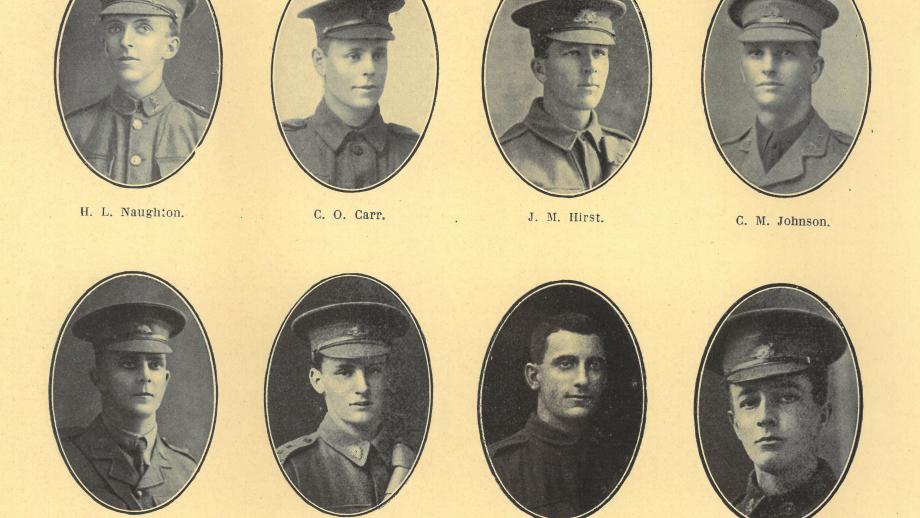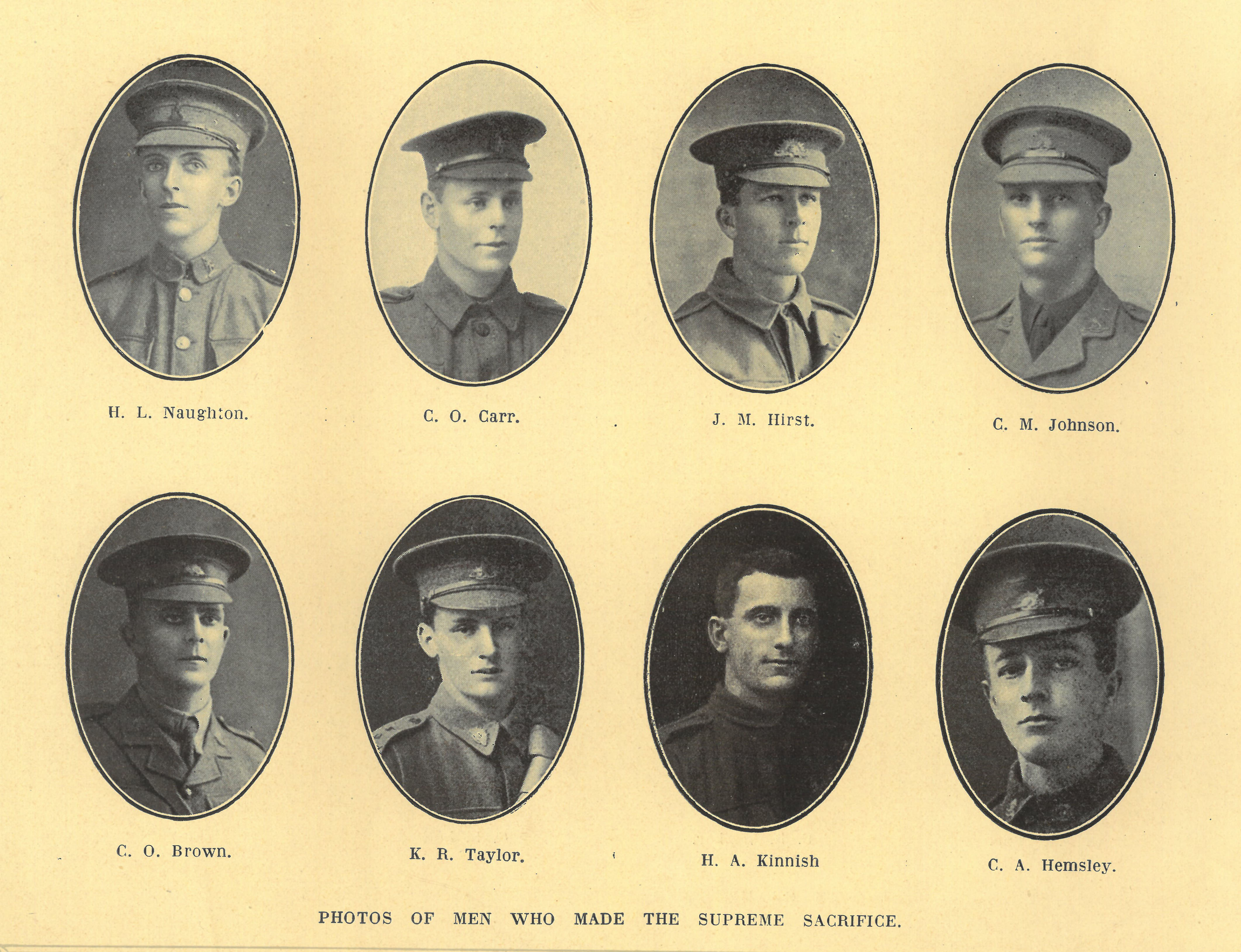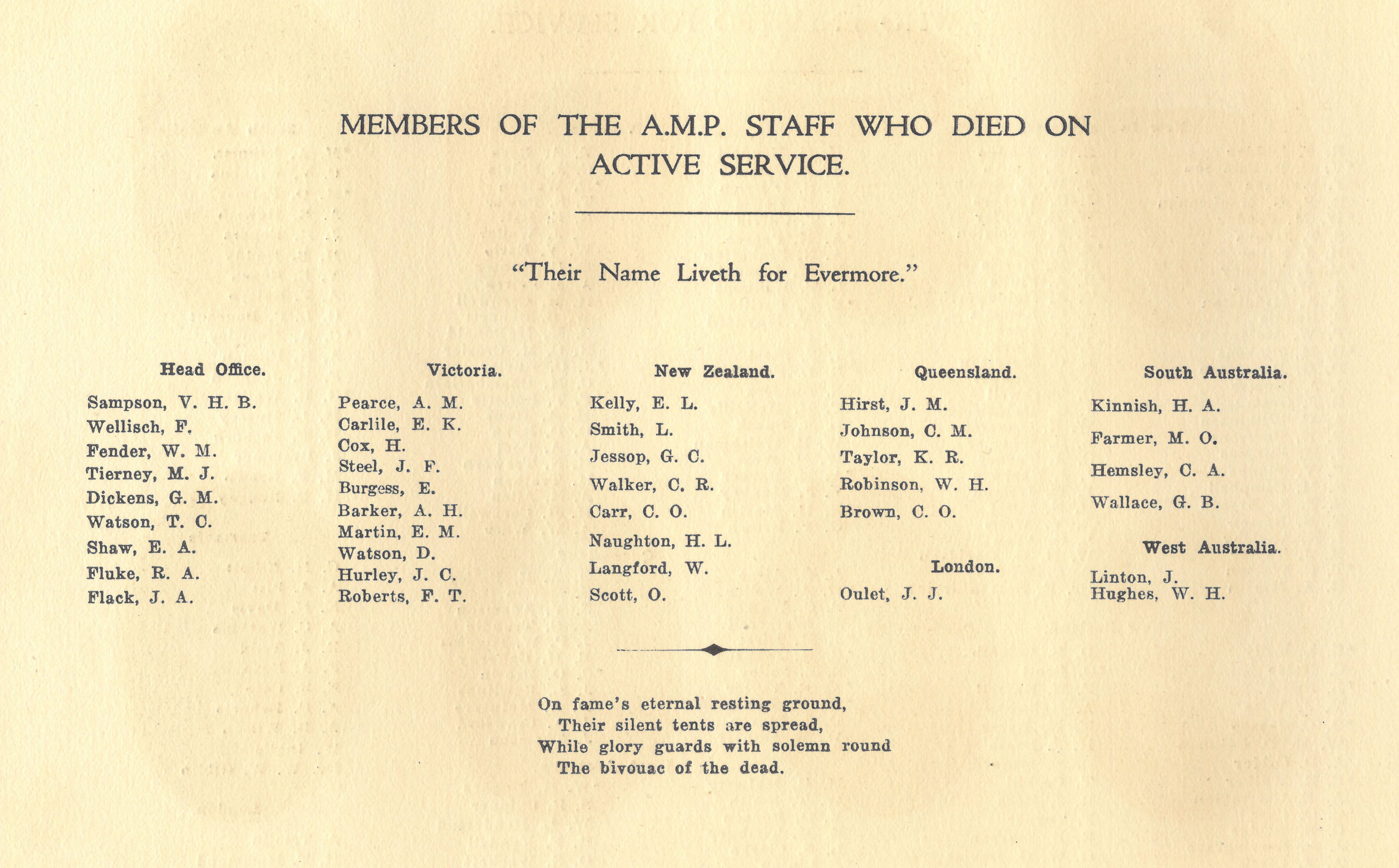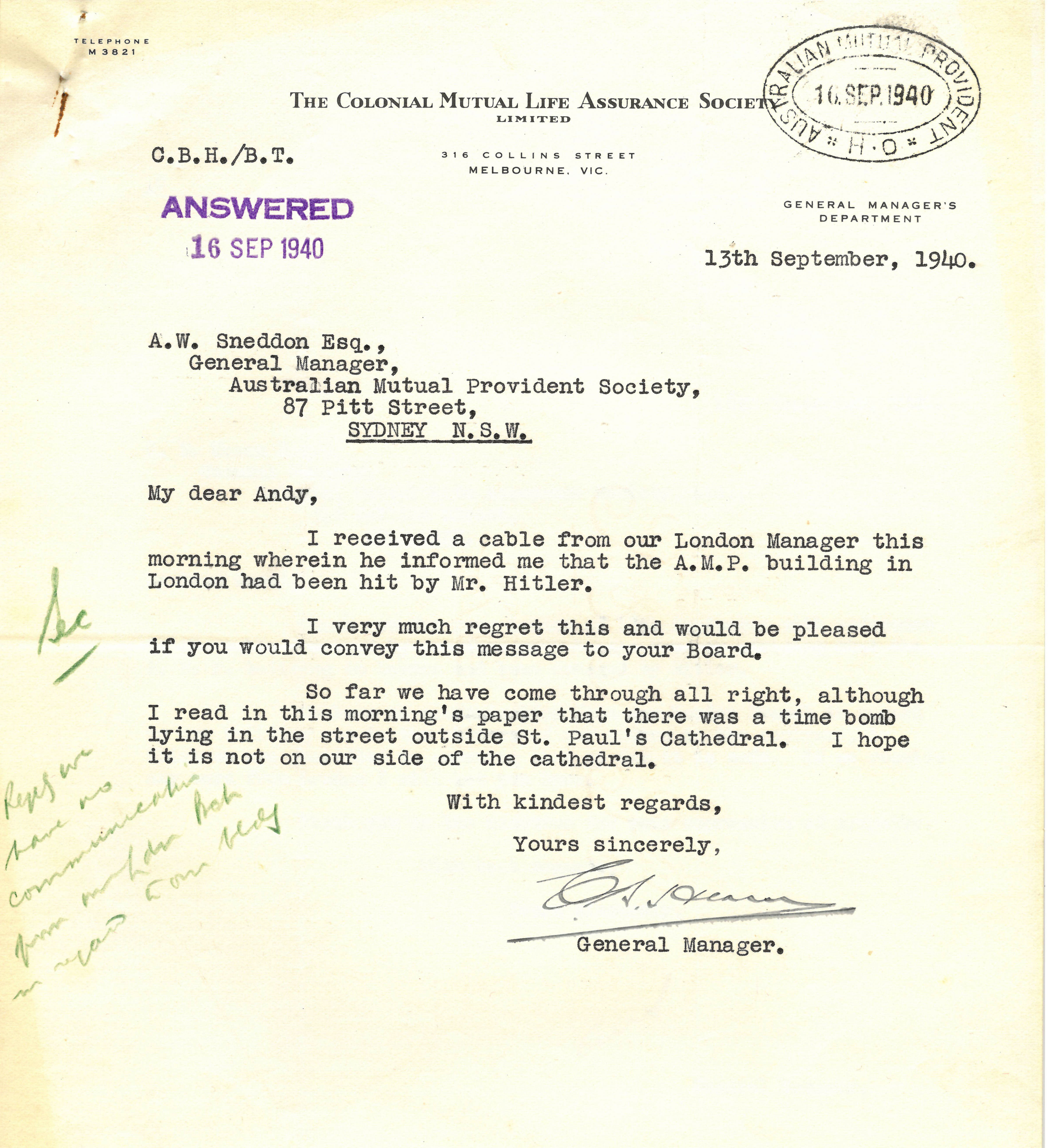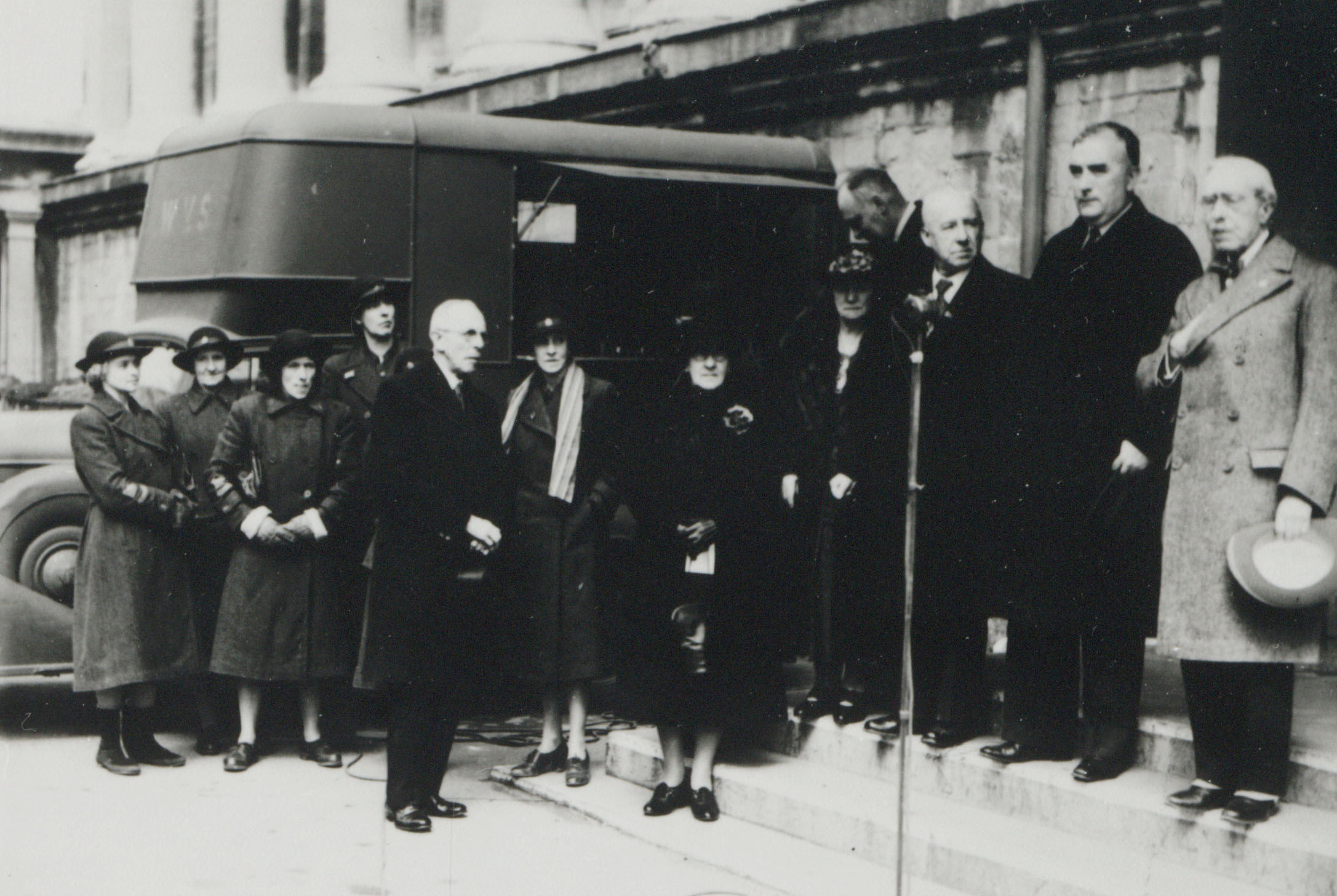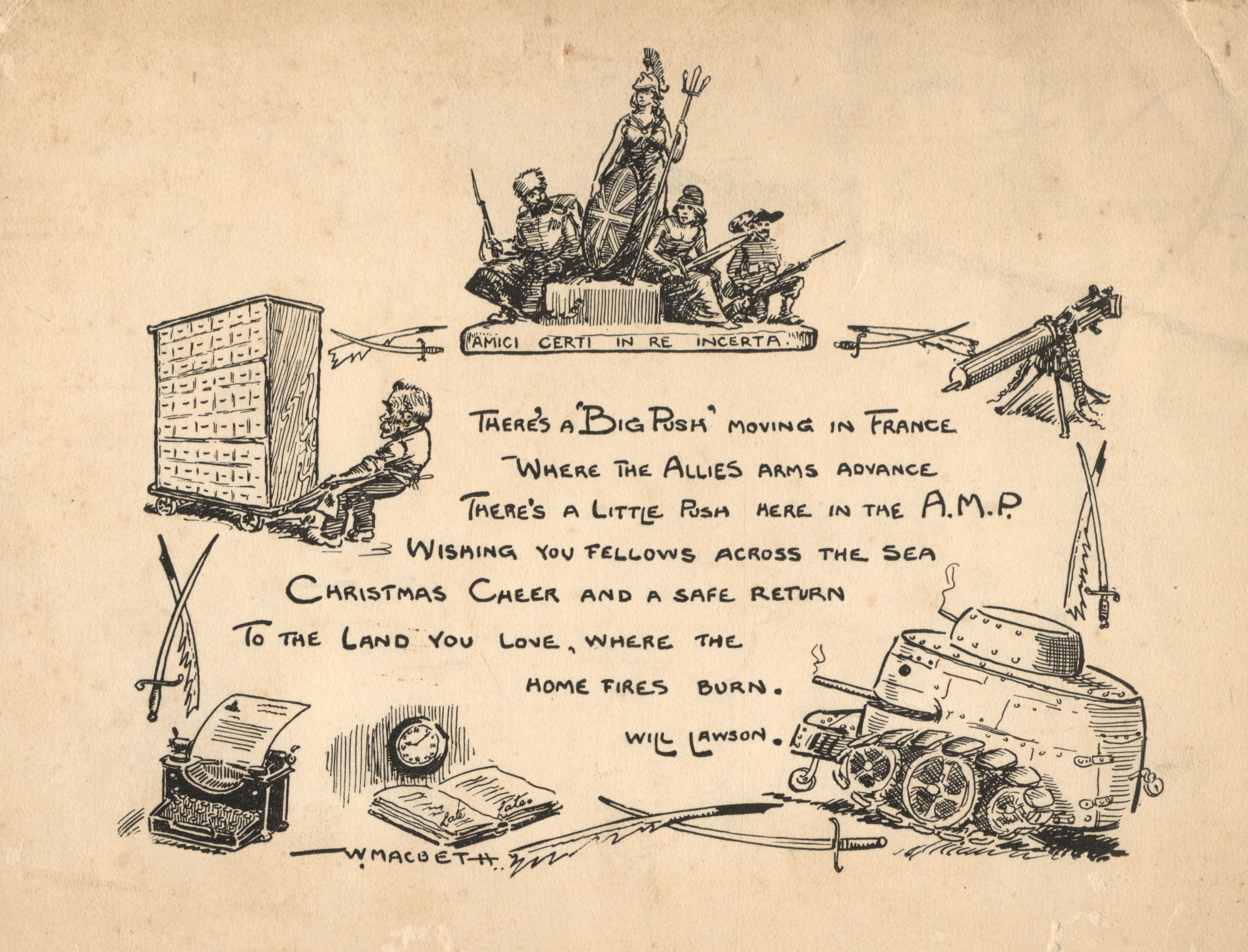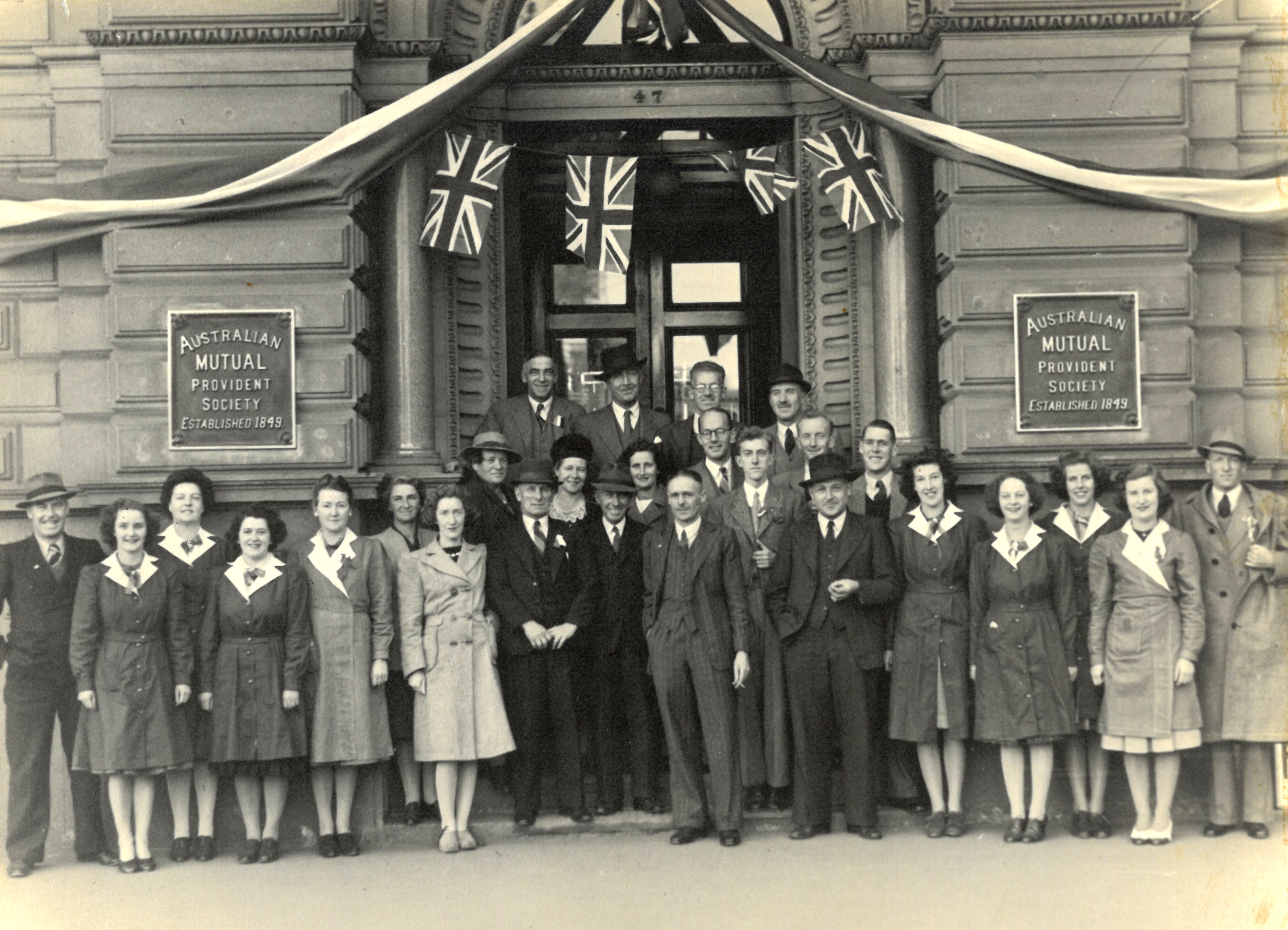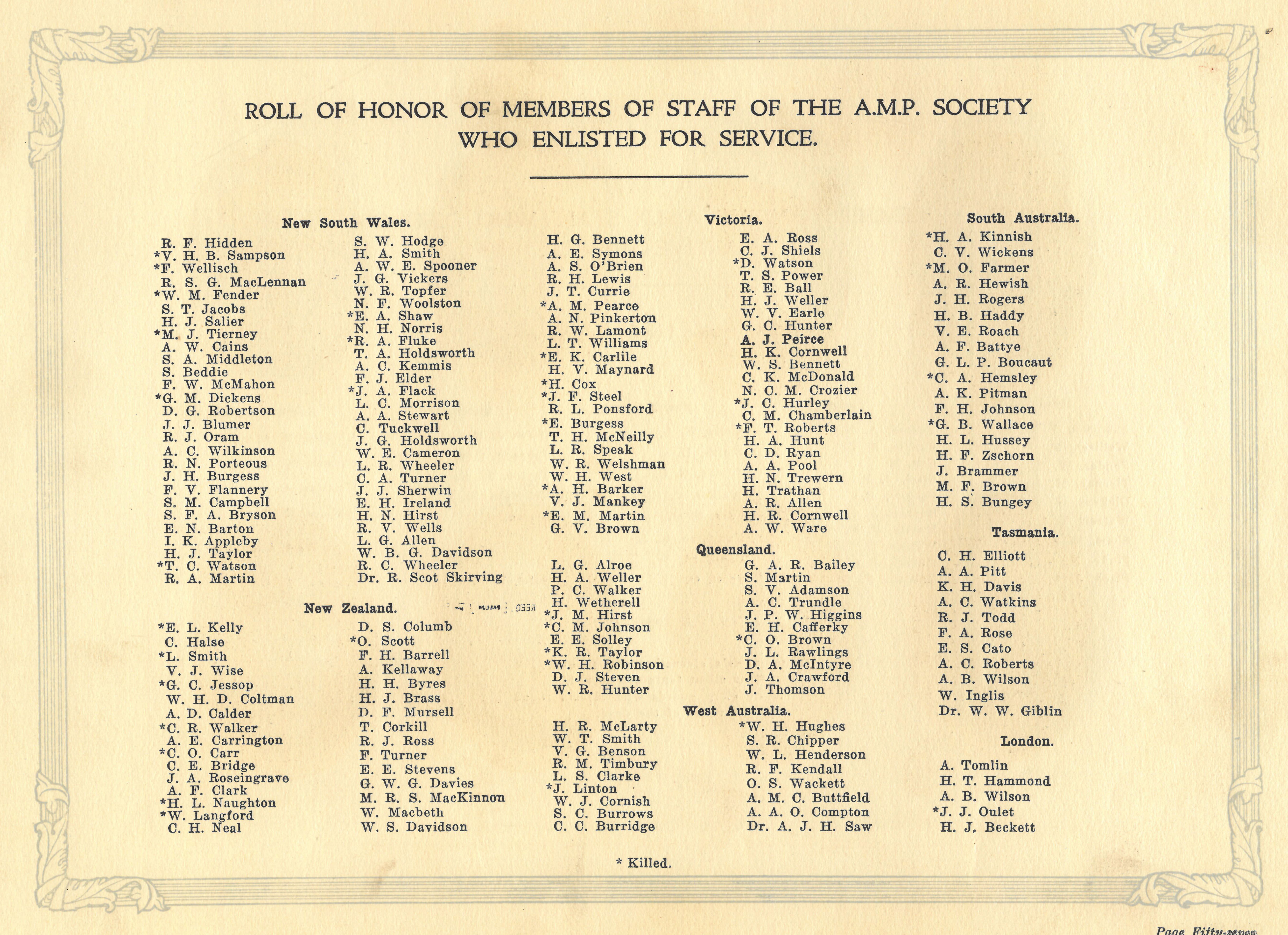The World at War
One of the biggest threats to a life insurance company was war, which naturally and tragically was accompanied by mass casualties. When the First World War broke out on 1 August 1914 AMP issued instructions to its employees that they must seek permission from the Society to enlist or lose the right to resume their position following the war as well as loss of their superannuation. However, the Society’s attitude quickly softened, and within weeks the board assured those enlisting they could return to their jobs and would receive full wages while serving in addition to their military wages.
AMP insured those who enlisted, but applied a policy surcharge of 5%, rising to 7.5% when they realised the surcharge was inadequate to cover the risks. As the war dragged on, some companies started to refuse cover to those who enlisted. AMP considered this tactic, but instead decided to cap policies for the enlisted to £2,000. AMP paid out large sums to the families of those killed. In 1915 this totalled £343,000 but by 1917 this had risen to £946,000 (Blainey, 1999). With so many employees enlisting, some AMP offices became understaffed and the number of women working in them grew rapidly.
The war presented many issues for AMP to consider. For example, would AMP pay out a policy for a soldier who died of self-inflicted wounds or someone who failed to pay the war surcharge that was applied to policies of the enlisted? These were regular scenarios, and it appears in most cases AMP favoured the policyholder. In fact, AMP was far more generous than many life offices when it came to applying war surcharges to policies, with most British companies charging three times the highest surcharge applied by AMP (Blainey, 1999).
In total, 39 AMP employees died as a result of their service in the First World War, the majority being from New South Wales. They were memorialised on an honour board displayed at the Sydney Head Office.
It is not known exactly how many AMP policyholders died as a result of the First World War, but it is thought to have been in the several thousands, with approximately £2.5 million paid out to their relatives (Blainey, 1999).
All too soon the world was at war again. From 26 September 1939 all new AMP policies included a war clause charging an additional premium if the policyholder enlisted. AMP staff who enlisted were given one month’s salary per year of military service, a provision not as generous as those given during the First World War, but still more generous than those provided by the average employer during the Second World War (Blainey, 1999).
When the Second World War broke out AMP insured around one quarter of the population of Australia and New Zealand, so another prolonged conflict with any great loss of life was almost unthinkable. The impact on the business was profound in many ways. With England so heavily affected by bombing, the London Office ran on a skeleton staff working out of the basement and the building did not escape the bombing. Fourteen male and three female staff from the London Office enlisted, with three killed in action (Blainey, 1999). In 1940 alone, the Industrial Department of AMP’s Victorian Office lost 70 staff to enlistment.
Initially, Australian casualties, both of AMP staff and policyholders, were lower than expected and while business fluctuated, a booming economy meant it did not suffer financially. This changed with Japan’s entry into the war and the subsequent increase in deaths of policyholders and staff. In May 1943, when the hospital ship Centaur was torpedoed by a Japanese submarine off Queensland, 21 of those killed were AMP staff or policyholders (Blainey, 1999).
With war on Australia’s doorstep, AMP prepared staff for potential air raids. All AMP offices had a plan for what to do in the case of an attack. The instructions to the Melbourne Office were as follows…
In the event of an air raid “Mr Paton should turn off the gas at the meter, lest a bomb should hit the building and lead to a dangerous leakage of gas, and Mr Fix – aptly named – should start up the emergency lighting and Mr Hansen should close the strong room door”. On each floor men were deputised to close the fireproof doors and take control of the lift. Miss Fullerton would turn off the gas in the kitchen. Firefighting parties would be stationed on the building roof. Near the cloak rooms on each floor would be a group of female staff who would administer first aid. On each floor would be buckets of water and sand as well as rakes and spades in readiness for putting out fires. On the second and sixth floors were axes and crowbars to be used to free any staff trapped by debris.
As the war continued, AMP, like most businesses, was increasingly impacted by staff shortages, as staff either enlisted or were seconded by the government. Those near retirement were persuaded to stay on, all staff took on more duties, and some administrative processes were streamlined or discontinued. By the end of the war, 1,762 staff had served with the Armed Forces (Blainey, 1999).
Surprisingly, although the number of new individual policies being sold by AMP fell, business increased through the growing popularity of group insurance products. This product was commonly sold to workers in factories and offices and was largely responsible for AMP’s positive results in early 1940s.
Unfortunately, there is no definitive surviving record of how many AMP policyholders were killed during the Second World War, but the Society paid out approximately £5.1 million to beneficiaries of policyholders killed on active service, and 62 of AMP’s staff were killed (Blainey, 1999). One complication in tabulating losses was that in some cases it was several years before AMP was informed of the deaths of some policyholders, particularly those who died as prisoners of war.
